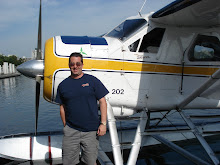Raymond John Paul Parer AFC 1894-1967

Ray Parer was born in Melbourne, and developed an interest in aviation at an early age. He enlisted in the Australian Flying Corps in 1916, initially as a mechanic, but was soon accepted to train as a pilot. His initial training was conducted at Point Cook. He was sent to England, and served as a pilot there, particularly in the test pilot role.
After the end of World War I, the Australian government offered a prize of £10000 for the first flight from England to Australia. He paired with John McIntosh, and, although leaving well after the event had been won, they arrived in Darwin on August 2, 1920. Their aircraft was an Airco DH-9, and theirs was the only other entrant to successfully complete the race. He was later awarded the Air Force Cross for this feat.
Parer was also a pioneer of aviation in New Guinea, one of the most hostile environments to operate an aircraft anywhere on earth. Aviation in the country at that time was chiefly involved with the gold mining industry, which was thriving in the 1920's. Parer set up business there, and is reputed to have been the first pilot to fly over the Owen Stanley Range.
In 1934, he participated in the MacRobertson Air Race from England to Australia, this time teamed with Geoff Hemsworth, flying a Fairey Fox. They departed on October 20, 1934, arriving at the destination, Melbourne, on February 13, 1935. Parer then returned to New Guinea, however the advent of World War II found him once again in military service, this time in the Royal Australian Air Force. Due to his health he was made a reserve, since he could not fly he turned to the sea. He was an engineer aboard the Melanesia, which delivered supplies and undertook reconnaissance along New Guinea's northern coastline.
After the war he purchased a ketch in Darwin and embarked in pearl exploration in the Torres Strait. From 1941 until 1951 he skippered a barge for the Department of Works around the Papua-New Guinea coast. He then worked on tourist vessels on the Great Barrier Reef, Queensland as an engineer. From 1956-58 he returned to Papua New Guinea to work in the oil exploration industry. He spent the last years of his life running two small farms at Mount Nebo, Queensland


<< Home